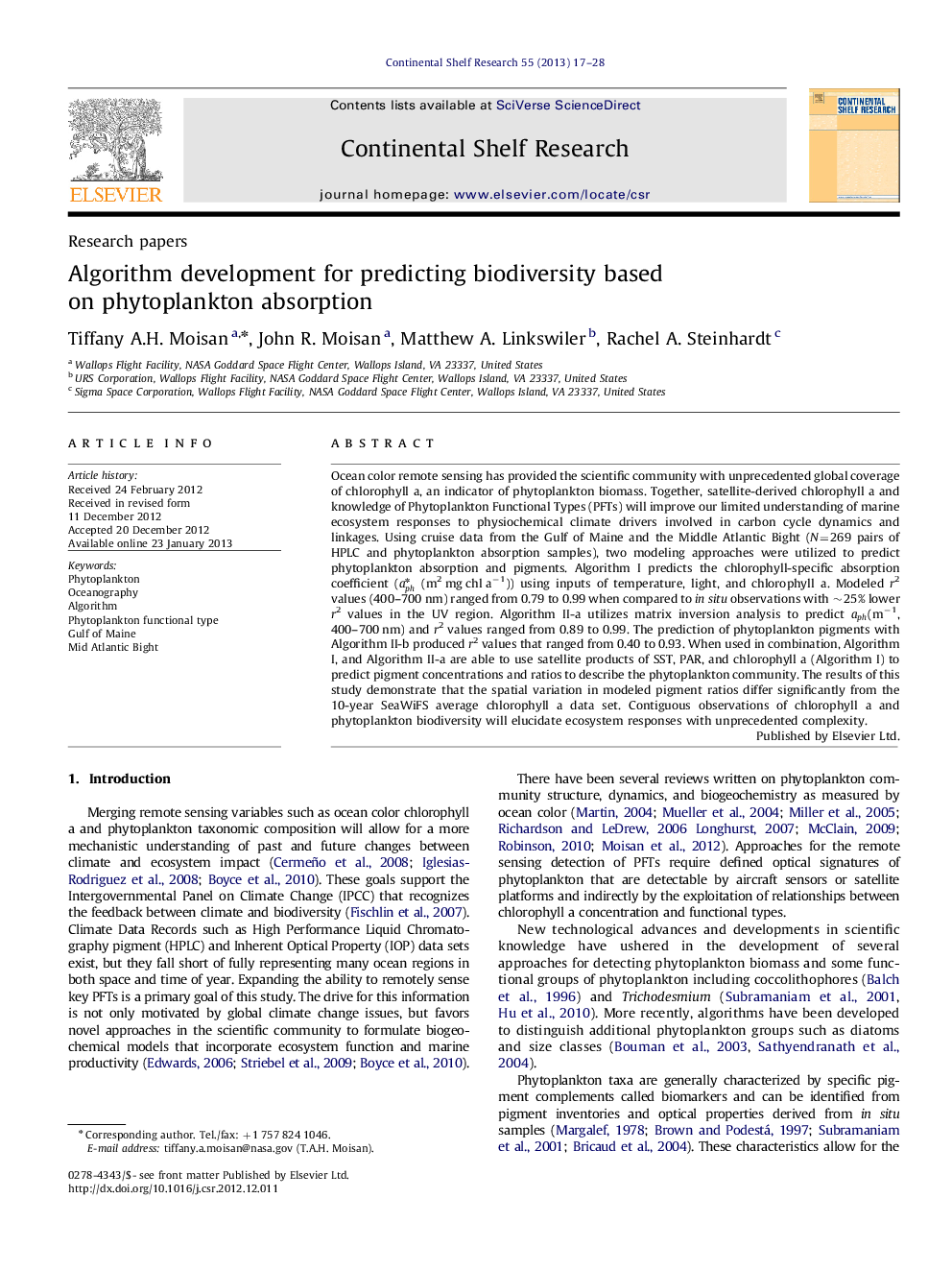| Article ID | Journal | Published Year | Pages | File Type |
|---|---|---|---|---|
| 4532191 | Continental Shelf Research | 2013 | 12 Pages |
Ocean color remote sensing has provided the scientific community with unprecedented global coverage of chlorophyll a, an indicator of phytoplankton biomass. Together, satellite-derived chlorophyll a and knowledge of Phytoplankton Functional Types (PFTs) will improve our limited understanding of marine ecosystem responses to physiochemical climate drivers involved in carbon cycle dynamics and linkages. Using cruise data from the Gulf of Maine and the Middle Atlantic Bight (N =269 pairs of HPLC and phytoplankton absorption samples), two modeling approaches were utilized to predict phytoplankton absorption and pigments. Algorithm I predicts the chlorophyll-specific absorption coefficient (aph⁎ (m2 mg chl a−1)) using inputs of temperature, light, and chlorophyll a. Modeled r2 values (400–700 nm) ranged from 0.79 to 0.99 when compared to in situ observations with ∼25% lower r2 values in the UV region. Algorithm II-a utilizes matrix inversion analysis to predict aphaph(m−1, 400–700 nm) and r2 values ranged from 0.89 to 0.99. The prediction of phytoplankton pigments with Algorithm II-b produced r2 values that ranged from 0.40 to 0.93. When used in combination, Algorithm I, and Algorithm II-a are able to use satellite products of SST, PAR, and chlorophyll a (Algorithm I) to predict pigment concentrations and ratios to describe the phytoplankton community. The results of this study demonstrate that the spatial variation in modeled pigment ratios differ significantly from the 10-year SeaWiFS average chlorophyll a data set. Contiguous observations of chlorophyll a and phytoplankton biodiversity will elucidate ecosystem responses with unprecedented complexity.
► NASA satellites provide a global marine diversity on global spatial and temporal scales. ► This paper developed an algorithm to predict biodiversity using satellite measurements. ► The novel algorithm predicts ∼14 marker pigments for the phytoplankton community. ► Biodiversity results differed from typical satellite chlorophyll a measurements. ► The results of our biodiversity measurements will aid in the interpretation of changes in climate.
